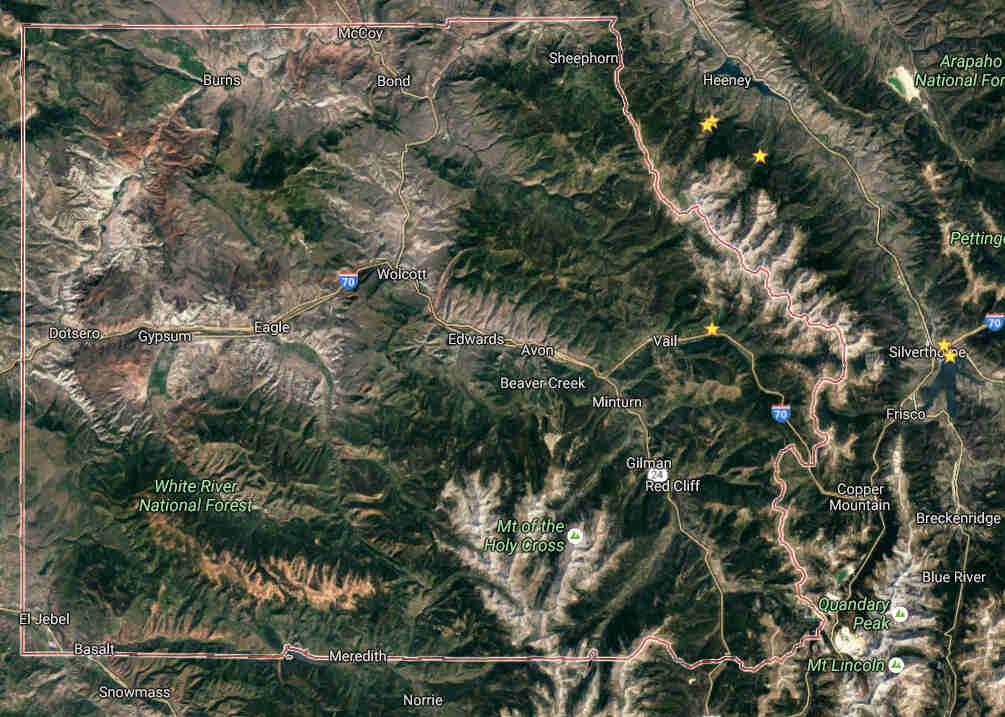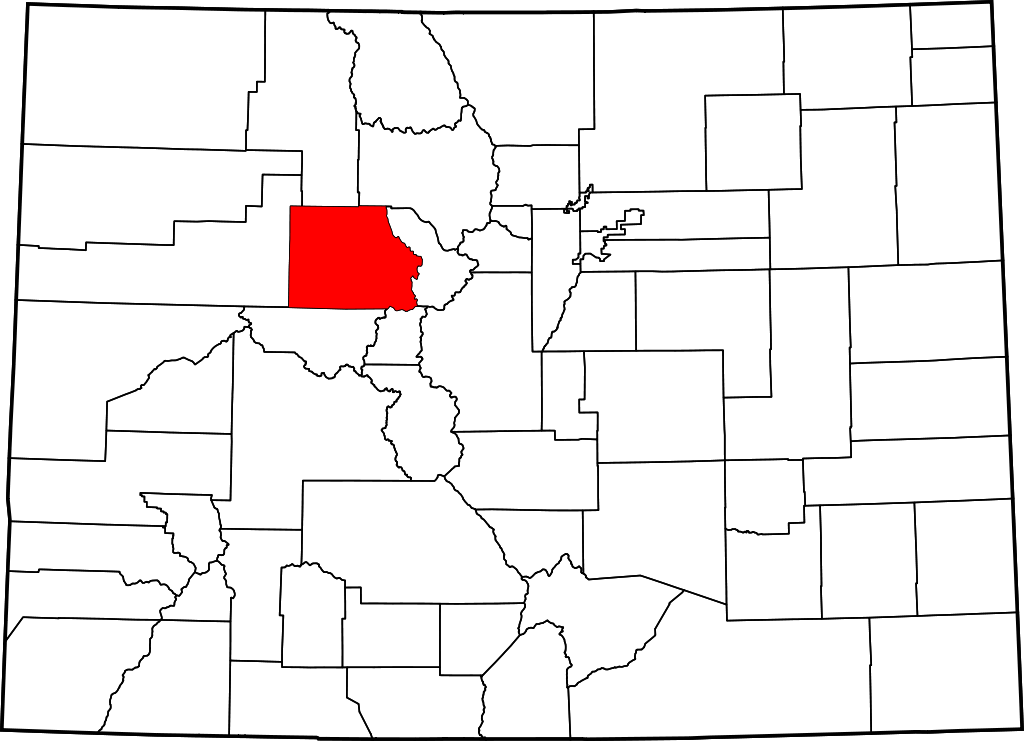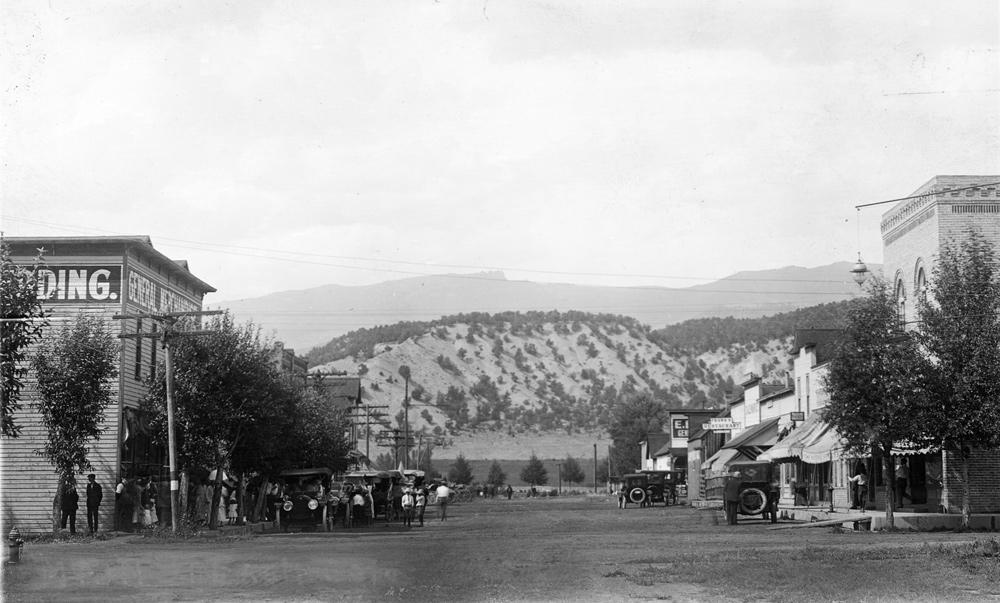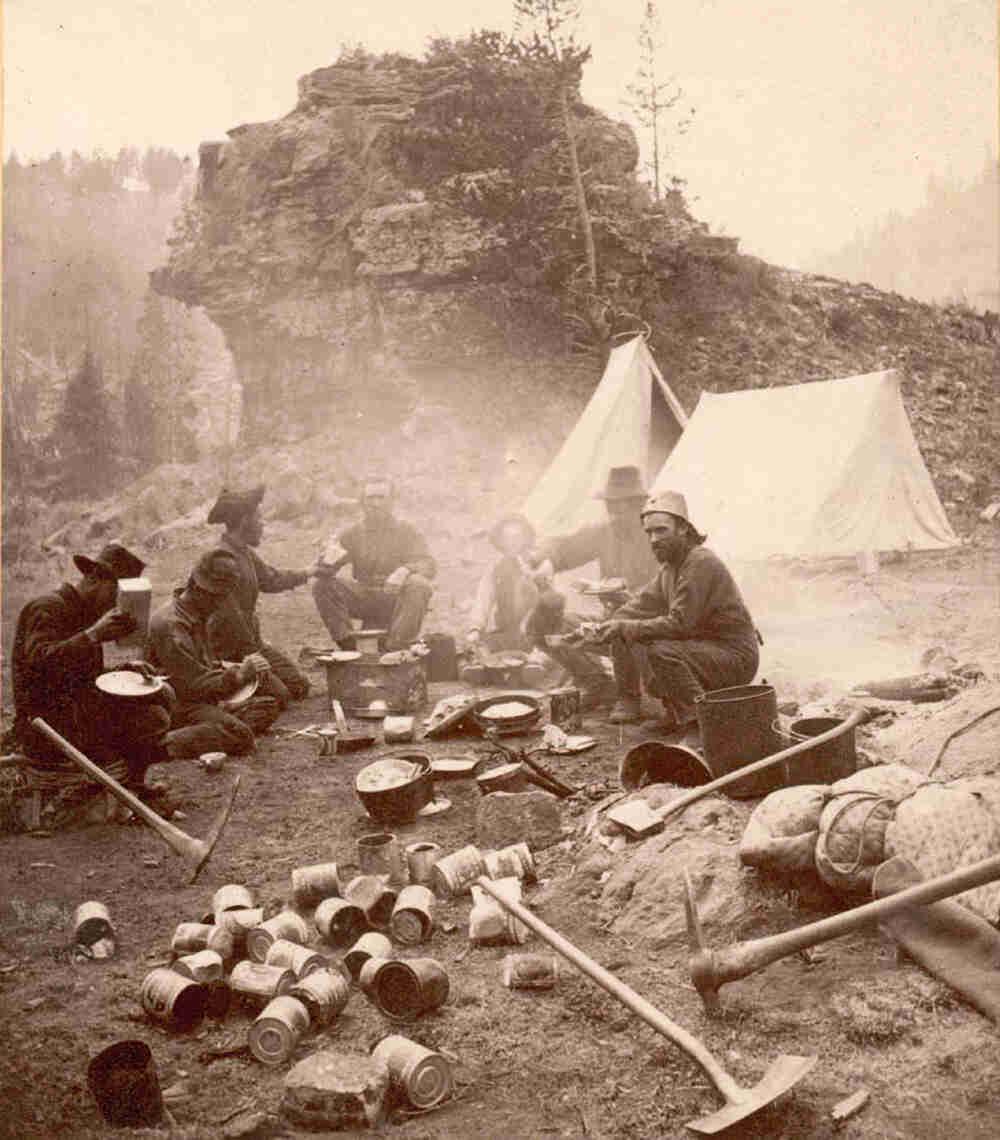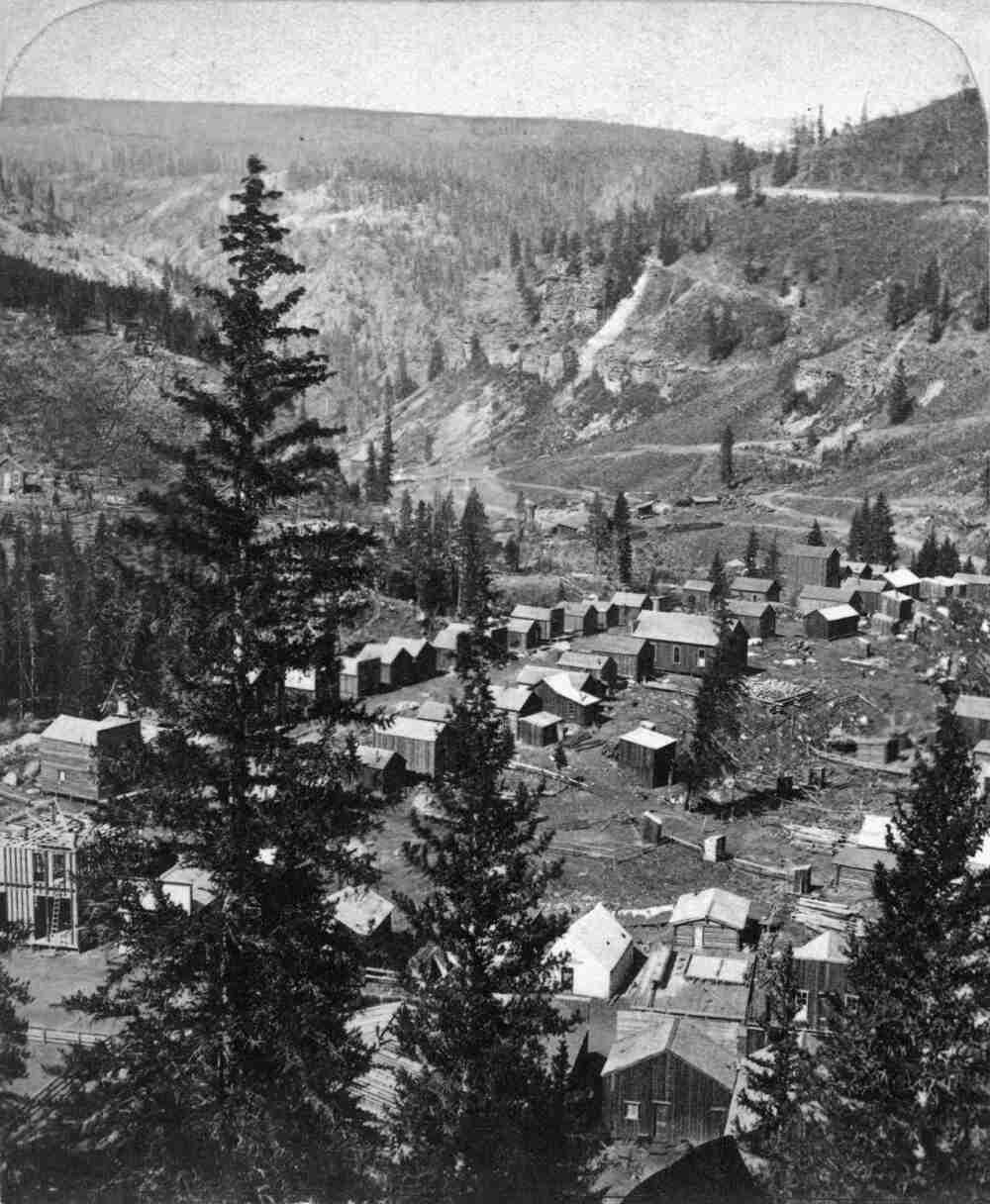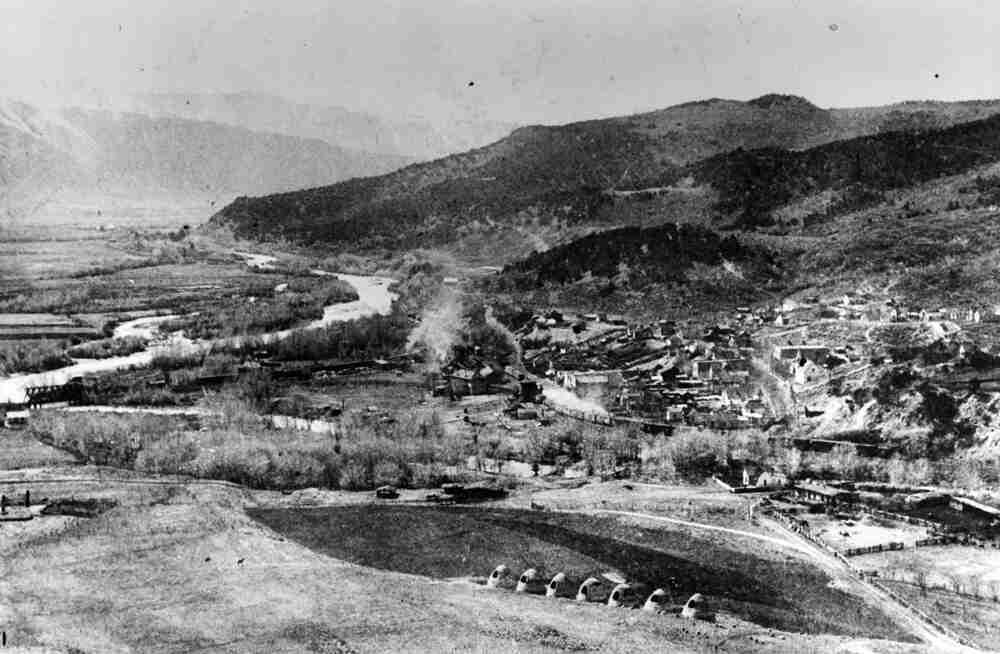Eagle County
Full Article
Eagle County, formed in 1883, covers 1,692 square miles of mountainous terrain in northwest Colorado. It is named for the Eagle River, which begins in the mountains in the county’s southeast corner, flows westward alongside Interstate 70, and meets the Colorado River near the small community of Dotsero on the county’s western edge. Eagle County is bordered by Routt and Grand Counties to the north, Summit County to the east, Lake and Pitkin Counties to the south, and Garfield County to the west.
The county has a population of about 53,000. The town of Eagle (population 6,508) is the county seat, but the largest community is Edwards (10,266). Other communities include, from east to west, Vail (5,302), Red Cliff (267), Minturn (1,027), Eagle-Vail (2,887), Avon (6,447), and Gypsum (6,477). The county’s southwest corner also includes the community of El Jebel (3,801) and parts of Basalt (3,857) in the Roaring Fork valley.
Once summer hunting grounds for Ute Indians, Eagle County attracted Anglo-American prospectors in the late nineteenth century. The Eagle River valley was the site of Colorado’s main east-west highway, which over the course of the twentieth century became part of the Interstate 70 corridor from Denver to Glenwood Springs. The Pando valley, in the southeastern part of the county, was home to Camp Hale, where the famous US Army Tenth Mountain Division trained for alpine combat in World War II.
Today, Eagle County is known for its ski resorts at Vail and Beaver Creek, as well as for its picturesque mountain scenery. Much of the public land in the county is managed by the US Forest Service as part of the White River National Forest, including the iconic Mount of the Holy Cross in southern Eagle County. Interstate 70 enters Eagle County from Vail Pass to the east and from Glenwood Canyon to the west; it intersects with US Highway 24 near Minturn and with State Route 131 at the tiny community of Wolcott.
Native Americans
Prehistoric hunter-gatherers lived in the Eagle County area some 10,000 years ago, as demonstrated by projectile points, grinding slabs, and other tools recovered by archaeologists. From about the mid-sixteenth through the late nineteenth century, the Eagle County area was inhabited by two bands of Utes: the Yampa, or “root eaters,” and the Parianuche, or “elk people.” The Utes spent their summers hunting elk, mule deer, and other game in the Eagle River valley and nearby Middle Park before returning to their winter camp in present-day Glenwood Springs. In addition to hunting, they were proficient gatherers and took from the landscape a wide assortment of wild berries, roots, and plants, such as the versatile yucca plant. By the mid-seventeenth century the Utes had obtained horses via the Spanish. The animals greatly improved Ute mobility and changed Ute culture. Horse racing became a popular pastime; Utes had a horse-racing track on Brush Creek in what would become Eagle County.
By the early nineteenth century the Arapaho began making seasonal ventures into the Rocky Mountains. Like the Ute, the Arapaho moved with the seasons, but they predominantly lived on the plains, ranging into the mountains to hunt during the summer. Their seasonal treks into the high country often brought them into conflict with the Ute, and the two tribes developed a fierce rivalry. For instance, a legend holds that in 1868 Utes and Arapahos clashed at Battle Mountain in southeastern Eagle County.
Explorers and Trappers
In 1845 veteran western explorer John C. Frémont led an expedition to find the source of the Arkansas River in the Rocky Mountains. After locating the source of the Arkansas, Frémont likely continued west into the Eagle River Valley before heading north toward Wyoming. In 1854 the wealthy Irish hunter Sir St. George Gore—commonly referred to as Lord Gore—roamed the area near present-day Vail and lent his name to Gore Creek and the jagged Gore Range. Famed western explorer John Wesley Powell also explored the range in 1868 and made the first ascent of its highest summit, a 13,566-foot peak known thereafter as Mt. Powell.
After the explorers came the fur trappers, who found the Eagle River valley, with its lush pine forests and network of pristine streams, to be prime beaver country. Trappers plied the area in the 1830s and established trading relationships with the Utes. In the 1840s trappers working for John Jacob Astor established a stockade on the west side of Battle Mountain at the confluence of Two Elk Creek and the Eagle River.
Not all trapper encounters with Utes were friendly. According to John Root, he and a companion were trapping in the area of present-day Eagle in the late 1860s when they were captured and taken to a nearby Ute camp to meet the Ute leader Colorow. Colorow ordered the trappers out of the Brush Creek Valley and confiscated two otter hides.
Removal of Utes
As more white settlements began appearing in the Eagle County area, tensions escalated between whites and Utes all over western Colorado. The Utes were promised the western third of Colorado in an 1868 treaty, but new mining claims in the Eagle County area and elsewhere resulted in a growing Anglo-American incursion onto Ute lands. The tension culminated in the Meeker Incident in present-day Rio Blanco County in 1879. Utes at the White River Agency killed Indian agent Nathan Meeker and other white staff, and the resulting outrage among Colorado’s white population prompted the Utes’ expulsion from western Colorado by 1882.
Mining
As the Colorado Gold Rush of 1858–59 unfolded across the Front Range, many prospecting expeditions explored west of the Continental Divide in search of the next big strike. One of the first prospecting parties in Eagle County came from Breckenridge in 1860. The men only explored the headwaters of the Eagle River and staked no claims. Astor City, a mining camp built around the remnants of Astor’s stockade near Battle Mountain in the late 1870s, may have been the first Anglo-American settlement. The Hayden Survey team, a federal expedition charged with mapping western Colorado and its resource reserves, camped at the future site of Astor City in 1873.
The county’s first major strike came in 1874, when silver ore was found in limestone deposits on the west side of Battle Mountain. Miners set up a permanent mining camp there, which became the town of Red Cliff in 1879. The town served the miners, who filed some 100 claims on the mountain. The Gilman mining district, north of Red Cliff, developed in the 1880s and included the Belden silver mine and the Ground Hog mine, the most productive in the area. Containing rare formations of gold and silver, the Ground Hog remained in operation until the 1920s.
In November 1881 the Denver & Rio Grande Railroad reached Red Cliff, allowing its ores to be more efficiently shipped to the smelters in Leadville. In 1885 a road from Leadville was extended to the confluence of Gore Creek and the Eagle River, already home to several mining and ranching families. The settlement was named “Minturn” in 1887, after Robert B. Minturn, a Denver & Rio Grande Railroad official instrumental in extending the rail lines down the valley.
Edwards, Eagle, and Gypsum
Not all early communities in Eagle County were related to mining. Many homesteaders came seeking free land. Edwards, for instance, was first settled by two ranchers in 1882. It was known as “Berry’s Ranch” until 1887, when the Denver & Rio Grande Railroad established a station there. The tiny community at the confluence of Lake Creek and the Eagle River then changed its name to “Edwards” after Red Cliff resident Melvin Edwards, who became Colorado’s secretary of state.
Two other ranching communities, Eagle and Gypsum, were first settled in 1882. By 1884 there were thirty-one ranches in Gypsum, near the west end of the Eagle valley at the confluence of Gypsum Creek and the Eagle River. Farther east, Eagle struggled to stay afloat in its early years. The town’s continuous name changes after 1882 reflected an identity struggle; the name “Eagle” became prominent in 1896 and was finally chosen in 1905. In the late 1890s Eagle served as a supply center for the mining camp of Fulford to the south, but cattle ranching and farming, particularly of potatoes and lettuce, proved to be the mainstay of the local economy thereafter.
County Establishment
The mining boom on Battle Mountain prompted the Colorado state legislature to carve Eagle County from neighboring Summit County in 1883. Red Cliff was chosen as county seat.
Mining in Eagle County continued throughout the twentieth century, moving from gold and silver to other metals, including copper, lead, molybdenum, and zinc. By 1970 the mines in the Gilman District had produced more than 393,000 ounces of gold, 66 million ounces of silver, 105,000 tons of copper, 148,000 tons of lead, and 858,000 tons of zinc. But by 1981 a combination of lower demand for molybdenum and zinc and environmental concerns caused the New Jersey Zinc Company’s Eagle Mine on Battle Mountain to close, turning Gilman into a ghost town.
Mount of the Holy Cross
By the late 1920s mining was waning and Red Cliff was on the decline, with some of the more productive mines shutting down. Voters moved the county seat to Eagle in 1921. The town then hoped that tourists to the Mount of the Holy Cross, a 14,000-foot peak that rose a few miles to the southeast, would boost its economy. In 1929 Red Cliff resident Orion W. Daggett climbed the mountain, which features a cross-shaped snowfield near its summit. Daggett thought Christians would come in droves to view the majestic peak, but the mountain was difficult to access. President Herbert Hoover designated the mountain as a National Monument in 1929. In 1945 the mountain became part of the White River National Forest, and in 1950 its national monument status was rescinded.
Camp Hale
In March 1942 the US Army chose the Pando Valley as the site for Camp Hale, where some 15,000 soldiers would train for high-altitude winter combat during World War II. By November the entire camp was complete, and the Tenth Mountain Division and other units began training that winter. The division served admirably in Italy during the winter of 1944–45, breaking the German line across the Apennine Mountains. After the war many veterans of the Tenth returned to Colorado to build the modern ski industry. In 1965 the army transferred the former site of Camp Hale to the White River National Forest.
Vail
 By the time the army closed Camp Hale, the town of Vail, lying along Gore Creek some twenty miles to the north, was a booming, ski-centric playground, drawing well over 100,000 visitors. But unlike other famous Colorado ski towns such as Aspen or Telluride, the Vail area had only a small Anglo-American presence; before 1961 the meadows of Vail Pass held little else besides ranches, a sawmill, and wildflowers. But that December, Tenth Mountain Division veteran Pete Seibert and other investors who became the founders of Vail Associates unveiled their plans for a mountain resort community with all the comforts of suburbia.
By the time the army closed Camp Hale, the town of Vail, lying along Gore Creek some twenty miles to the north, was a booming, ski-centric playground, drawing well over 100,000 visitors. But unlike other famous Colorado ski towns such as Aspen or Telluride, the Vail area had only a small Anglo-American presence; before 1961 the meadows of Vail Pass held little else besides ranches, a sawmill, and wildflowers. But that December, Tenth Mountain Division veteran Pete Seibert and other investors who became the founders of Vail Associates unveiled their plans for a mountain resort community with all the comforts of suburbia.
A town sprung from the meadows in a matter of months, and by the end of the decade Vail became one of the most preeminent ski destinations in the country, famous for its family-friendly atmosphere, unrivaled convenience, accessibility—especially after the completion of Interstate 70—and affluent, exclusive culture that attracted an elite crop of visitors and residents as well as middle-class ski bums.
Today
 Today, the Eagle County economy is heavily reliant on tourism and real estate development. A 2013 County Economic Development Plan reported that businesses in accommodations and food services, retail trade, and arts, entertainment, and recreation services accounted for nearly half of the county’s jobs. The same report noted that real estate transactions increased by 27 percent between 2011 and 2012. Together, Vail and Beaver Creek ski resorts draw more than 2.5 million visitors each year; in 2015 a writer for Forbes proclaimed Vail as “The King of American Ski Resorts.”
Today, the Eagle County economy is heavily reliant on tourism and real estate development. A 2013 County Economic Development Plan reported that businesses in accommodations and food services, retail trade, and arts, entertainment, and recreation services accounted for nearly half of the county’s jobs. The same report noted that real estate transactions increased by 27 percent between 2011 and 2012. Together, Vail and Beaver Creek ski resorts draw more than 2.5 million visitors each year; in 2015 a writer for Forbes proclaimed Vail as “The King of American Ski Resorts.”
Ranching, the county’s early economic driver, has greatly dwindled but still exists. In 2012 Eagle County ranchers raised more than 7,200 sheep, 5,800 head of cattle, and 900 horses.
Unlike many other places in rural Colorado, Eagle County was able to make a decent recovery from the Great Recession in 2008; county foreclosures dropped by 91 percent from April 2010 to April 2011, and both retail sales and the number of real estate transactions increased from 2011 to 2012. Visitors to all Vail resorts rose by 4 percent between the 2010 and 2011 ski seasons.
As of January 2016 the county is also predicting a population surge, mirroring many other places in Colorado. An expected 41,000 additional residents over the next twenty-five years will challenge Eagle County leaders to balance impending growth with preserving the natural environment that draws so many people to the area.



